Short Communication - (2023) Volume 11, Issue 1
Received: 01-Jun-2020, Manuscript No. JAAT-20-12342;
Editor assigned: 04-Jun-2020, Pre QC No. JAAT-20-12342(PQ);
Reviewed: 18-Jun-2020, QC No. JAAT-20-12342;
Revised: 02-Jan-2023, Manuscript No. JAAT-20-12342(R);
Published:
30-Jan-2023
, DOI: 10.37421/2329-6542.2023.11.239
, QI Number: JAAT-20-12342
Citation: Mathlouthi, Adel. "Dimensions of the
Universe ." J Astrophys Aerospace Technol 11 (2023): 239.
Copyright: © 2023 Mathlouthi A. This is an open-access article distributed under the terms of the creative commons attribution license which permits unrestricted use,
distribution and reproduction in any medium, provided the original author and source are credited.
When someone mentions "different dimensions" we tend to think of things like parallel universes alternate realities that subsist parallel to our own, but where things work or happened differently. However, the reality of dimensions and how they play a key role in the ordering of our universe is really little different from this famous characterization. To break it down, dimensions are simply the different facets of what we perceive to be reality. We are instantly aware of the three dimensions that surround us on a daily basis those that define the length, width and depth of all objects in our universes (the x, y and z axis, respectively).
The age of the universe
The age of the universe represents the length of time since the big bang, that is to say the dense and hot phase of the history of the universe. This term does not prejudge that the universe is of a finite age, its state prior to big bang being in the XXI century impossible to theorize because modern physics has no model to describe the behavior of matter if high temperature and in a gravity as intense as at the time of the big bang.
Atomic explosion
Energy release: The first phase of the atomic explosion (from 0 to 10-6 seconds) is the chain reaction, which produces atomic energy [1].
Measurement of the radius of the ball of light of an atomic explosion:
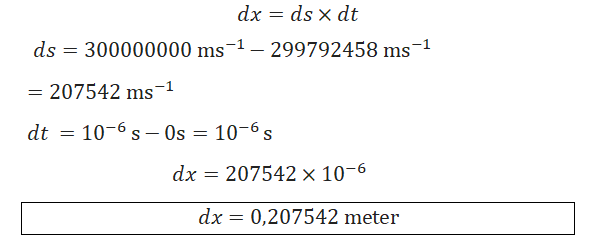
Radius measurement of the universe:
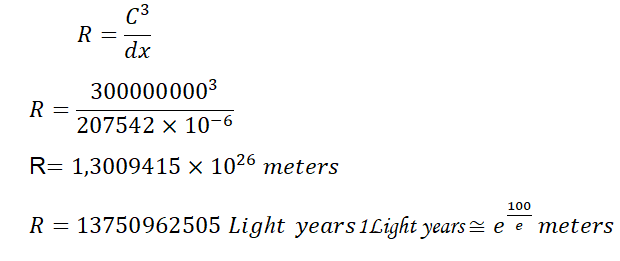
Measure the age of the universe:
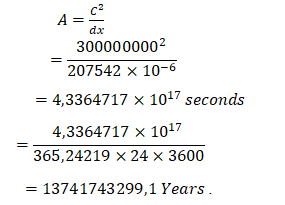
At that time, billions of asteroids attack the planets of the universe, among them (one or more) asteroids attack the earth and cause the disappearance of some 75% of life forms on earth (extinction of the dinosaurs) [2]. At the same time, black holes were born, (we can say that a cosmic tremor took place and the universe begins a phase of deceleration following the phase of acceleration) [3].
Note: The distances between the galaxies increased because of the great gravity of the black holes.
Measurement of the age of the current universe: The extinction of the dinosaurs happened about 65 million years ago.
A=13741743299, 1+65000000
A equal to around: 13806743299, 1 year.
The shape of the universe: The universe would not be flat but would rather have the shape of a sphere. The theory of cosmic inflation explains that the universe experienced a very brief expansion stage shortly after the big bang.
How fast is the universe expanding: The researchers used all of this information to calculate the universe's present day expansion rate, a value known as the Hubble constant, after American astronomer Edwin Hubble. The new number is about 46.0 miles (74.03 kilometers) per second per mega parsec; one mega parsec is roughly 3.26 million light years.
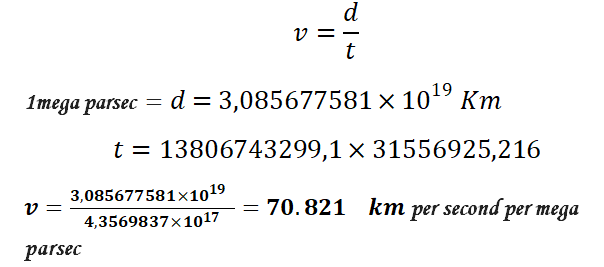
The fate of the universe: For most of recorded history, the answer was simple: The universe has always existed and always will. Few people challenged the dogma or even suspected it might not be true.

The expansion of the universe decelerates over time. The deceleration of the expansion corresponds to the evolution of the speed. The growth of massive black holes results in a great rupture, the big rip is the ultimate fate of the universe, in which the substance of the universe is torn from stars and galaxies to atoms and subatomic particles, and even space time itself, gradually the universe at a certain time in the future.
The space time formula:
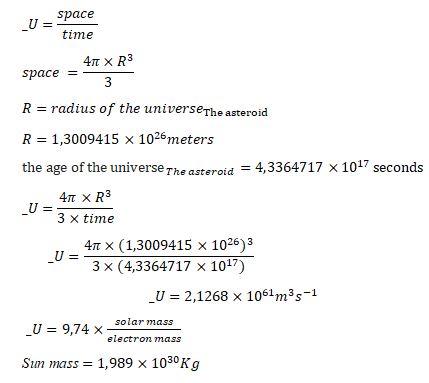
Planck dimensions:
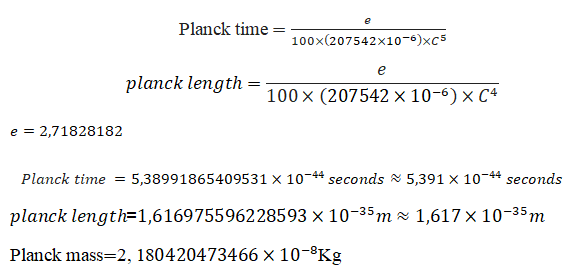
The age of the universe formula:
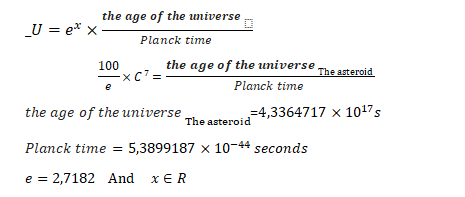
The radius of the universe formula:

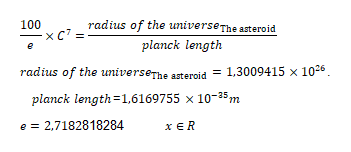
The theory of space time:
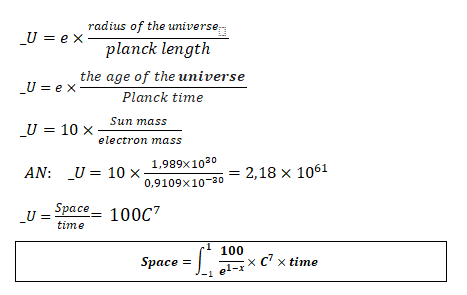
The mass of the universe: Asteroid age

The energy of the universe: Asteroid age

Center of the universe: Looking up at a clear night sky, you see stars in every direction. It almost feels as if you're at the center of the cosmos. But are you? And if not, where is the center of the universe? The sun is a large compass; it is heading completely to the center of the universe in the same direction as our compass [4].
In the beginning, Astronomers believed that the cosmos was eternal and unchanging. We only knew one galaxy and a few million visible stars and that was the range of our observable universe. Then astronomer Edwin Hubble observed, the red shift, distant galaxies moving away from each other and formulated Hubble's law to explain the uniform expansion of the universe. I tried to do this research to give another clear look of our universe and go further.
[Crossref] [Googlescholar] [Indexed]
[Crossref] [Googlescholar] [Indexed]
[Crossref] [Googlescholar] [Indexed]
[Crossref] [Googlescholar] [Indexed]
Astrophysics & Aerospace Technology received 114 citations as per Google Scholar report